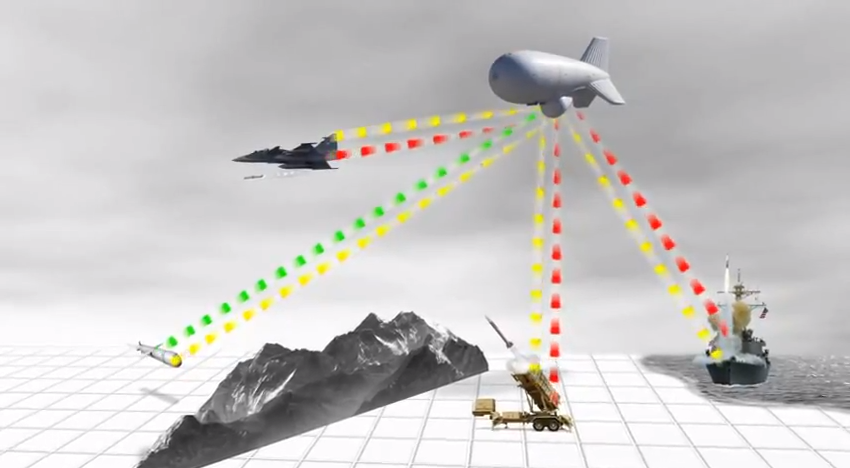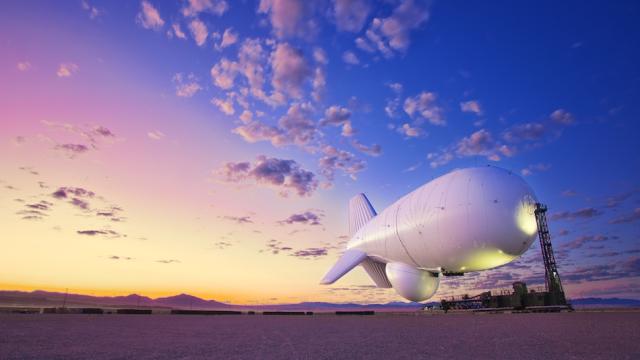A still-chilling consequence of post-9/11 America is that we remain all too aware of the fact that we could be attacked at any moment. And so with worst case scenarios in mind, the US military is constantly upgrading its defence systems in increasingly creative ways. Washington DC is next in line. It’s getting blimps.
To call Raytheon’s JLENS system mere blimps, though, is doing the defence contractor a disservice. These house-sized flying spy fortresses can identify threats on the ground that even the most powerful land-based radar would miss. They can spot and track incoming cruise missiles, mine-laying ships, armed drones, or anything incoming from hundreds of miles away in 360 degrees and react in real-time. Perhaps most impressively, the JLENS system can stay in the air watching over a base or a city for up to 30 days, all day and all night, without needing to be resupplied or refuelled. Obviously, this is preferable to the very expensive fleet of five spy plans that it would take to do the same work that the JLENS does with less than half the manpower.

In a matter of weeks, the defence Department will deploy several JLENS blimps over the Washington DC to watch over the nation’s capital. At 74m long, the aircraft aren’t exactly Goodyear blimp-sized, but they’re not inconspicuous either. The JLENS system is made up of two aerostats: One equipped with a fire control radar that provides targeting data and the other with a surveillance radar that can see in all directions. Floating at 3000m above the ground, the JLENS system will also be able to see all the way out to the Atlantic Ocean.
The JLENS system is already on its way to the Washington DC area after having finished a successful test out in Utah. With over 100 soldiers trained on the system, the US Army ran early user testing in a number of different complex scenarios. The next step is to transport the whole outfit to the Aberdeen Proving Ground in Maryland where it will undergo an operational evaluation and eventually enter into active duty, so to speak.
It’s unclear exactly when the JLENS system should take flight, but it’s hard to see the downside in the arrangement until then. When all said and done, the defence Department will be spending up to 700 per cent less on the JLENS system than on spy planes, and will ostensibly get better protection. And who knows? They might be able to pitch in some aerial photography for Redskins games. [Raytheon]
Pictures: Raytheon
